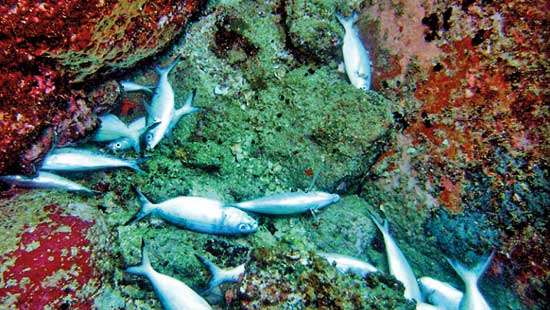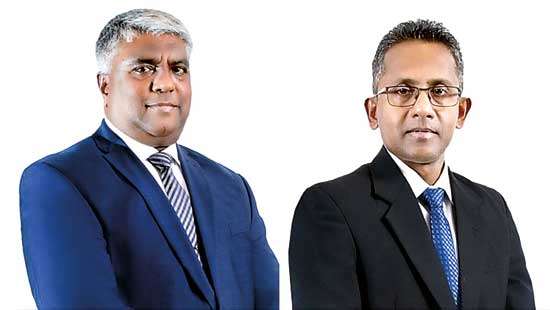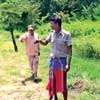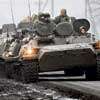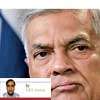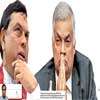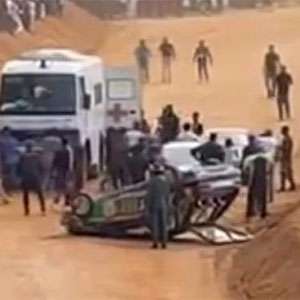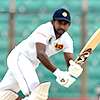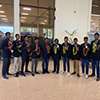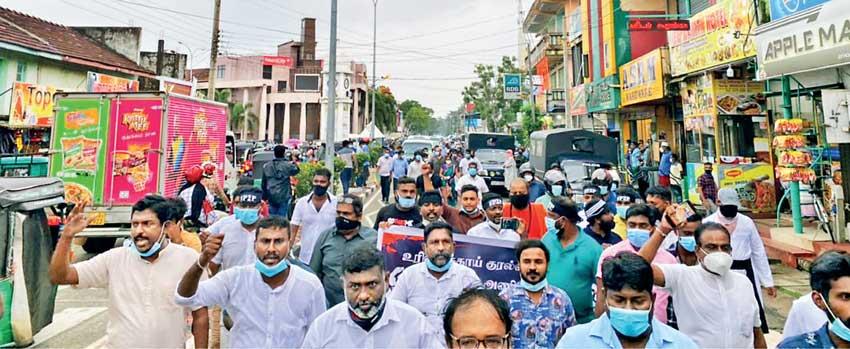
Photo courtesy-Tamil Guadian
The objective is to protest the various acts of alleged oppression and discrimination being perpetrated against the Tamil and Muslim people of Sri Lanka and draw the attention of the world
As the protest got underway there was a spontaneous upsurge of support by Tamils as well as the Tamil speaking Muslims of the East
The advent of President Gotabaya Rajapaksa and his Government has amounted to a watershed moment for the Country in general and Tamils in particular
By
D. B. S. Jeyaraj
There has been a lot of political excitement in the Tamil speaking areas of the Eastern Province for the past two days (February 3 and 4) due to the launching of a protest demonstration named “Pottuvil to Poligandy” or “P2P”. This was to be a long march on foot and in vehicles from the Eastern town of Pottuvil in the Ampara District to the Northern town of Poligandy in Jaffna district. The four - day journey was to be along the roads of the Eastern and Northern Provinces. Beginning on February 3 in Pottuvil, it was scheduled to end in Poligandy on February 6. However, it has now been extended by another day to February 7. The objective is to protest the various acts of alleged oppression and discrimination being perpetrated against the Tamil and Muslim people of Sri Lanka and draw the attention of the world.
The protest march or demonstration was initially organised by committed Tamil civil society activists in tandem with Ilankai Thamil Arasuk Katchi (ITAK) parliamentarians Mathiaparanan Abraham Sumanthiran and Shanakiyan Rajaputhiran Rasamanickam. The campaign was officially supported by the Tamil National Alliance (TNA). Soon other Tamil organisations as well as political parties like the Tamil National People’s Front (TNPF) also lent support. As the protest got underway there was a spontaneous upsurge of support by Tamils as well as the Tamil speaking Muslims of the East.
Despite concerted efforts by the Sri Lankan Police to prevent the protest, large scale participation by the people and the determination of the organisers has ensured its success so far. At the time this article is being written (on February 4 night) the participants had covered a distance more than 250 km in two days. On the first day, a distance of nearly 100 km was covered from Pottuvil to Thalankudah in Batticaloa District. On the second day, a distance over 150 km was covered from Thalankudah to Trincomalee town. A distance of about 235 km from Trincomalee to Poligandy via Mullaitivu and Kilinochchi was to be travelled in the next two days (February 5 and 6). Subsequently, plans were changed. The trek from Trincomalee to Poligandy will now be completed in three days with detours to Vavuniya and Mannar.
The choice of name for the protest is intriguing and interesting. Usually, the geographical length of Tamil speaking regions in the Northern and Eastern provinces are described as between northernmost Point Pedro to Southernmost (in the East) Panama. But in this instance, the two places selected are Poligandy close to Point Pedro/Valvettithurai and Pottuvil close to Panama. The first Tamil letter “PO” of both Pottuvil and Poligandy are the same. Apart from the alliterative aspect, there was another “poetic “reason for the phrase Pottuvil to Poligandy.
Classical Tamil Landscapes
The landscape in regions inhabited by Tamils are of five categories in classical Tamil. According to the ancient “Sangham” literature the five categories are “Kurinchi” (hill country), “Marutham” (Agrarian lands and settlements), ” “Mullai” (forests and grasslands), “Neidhal” (coasts and adjoining lands) and “Paalai” (deserts and sandy areas). The coastal areas of the Northern and Eastern Provinces can be categorised as “Neidhal” according to classical Tamil definition. In a popular song glorifying the “Neidhal” or littoral regions of the North and East there is a line “Pottuvil Thodakkam Poligandy Varaikkum, Pongum Kadal Valangal Polihindranavae” (marine resources proliferate abundantly from Pottuvil to Poligandy). This then was the reason for choice of name.
The Pottuvil to Poligandy protest had its genesis in the prevailing political situation. The advent of President Gotabaya Rajapaksa and his Government has amounted to a watershed moment for the Country in general and Tamils in particular. Many Tamils feel discriminated against under the Gotabaya Rajapaksa dispensation. After assuming office President Rajapaksa has demonstrated clearly that the Government would cater primarily to the perceived needs of the majority community. He has even explicitly stated that he is the leader of the Sinhala Buddhists in his recent Independence Day address. There are many acts of omission and commission affecting Tamils. In the prevailing situation, Tamils feel utterly helpless politically.
This mood of despondency and feeling of helplessness has led to a closing of ranks and escalation of demands by Tamil political parties. A significant indicator of this “change” occurred on January 15 this year when three Tamil political parties namely the TNA, TNPF and TMTK unitedly sent a joint letter to the 47 member states of the United Nations Human Rights Council (UNHRC). Apart from the three party leaders eight other civil society representatives and religious leaders also signed the letter. The letter demonstrated clearly that Tamil political parties and civil society organisations were closing ranks and forging greater intra-ethnic unity. It also indicated that Tamil political demands were escalating as far as the UNHRC was concerned.
In what appeared to be a follow -up of the joint letter being sent, a conference of several Tamil political parties and Tamil civil society organisations was held in Jaffna a few weeks ago. Many Tamil activists from the East attended it. In spite of large numbers of Batticaloa and Ampara district Tamils having voted for candidates of the ruling Sri Lanka Podujana Peramuna (SLPP) and parties aligned to it, recent happenings like the Presidential Task Force on protecting Archaeology, arbitrary seizure of traditional pastures of dairy farmers and moves to relocate Sinhala settlers in lands belonging to Tamils has made Tamils feel greatly threatened and insecure. So Eastern Tamils expected much from the Jaffna conclave. The results, however, were disappointing. After much “jaw-jaw” the conference ended inconclusively without any meaningful decision.
Some of the disappointed Eastern civil society representatives turned to TNA Batticaloa district MP Shanakiyan Rajaputhiran Rasamanickam. Shanalliyan is the grandson of former Ilankai Thamil Arasuk Katchi (ITAK) president and ex -Paddiruppu MP S.M. Rasamanickam. They held discussions with Shanakiyan about conducting a comprehensive protest demonstration involving Eastern and Northern Tamils. When Shanakiyan endorsed the idea in principle, the civil society activists wanted a guarantee that the TNA which is the premier political configuration of the Sri Lankan Tamils would throw its weight behind the protest. They also wanted to consult TNA spokesman and Jaffna district MP M. A. Sumanthiran.
This was followed up with a meeting of Sumanthiran and Shanakiyan along with civil society activists. Sumanthiran concurred with the proposal mooted by civil society activists and agreed to do the spadework with TNA leaders. Civil society representatives went ahead with the knitty-gritties of planning. Specific duties were assigned and overall coordinators were appointed. It was decided to launch a protest march named “Pottuvil to Poligandy” from the east to the north meanwhile Sumanthiran contacted TNA leader R. Sampanthan and leaders of the three Constituent parties of the alliance and obtained their approval. The green light was given to the Civil society activists.
“Kavana Eerppu Poaraattam”
On January 28 a joint appeal for a “Kavana Eerppu Poaraattam” (Attention drawing protest) was made on behalf of Tamil civil society organisations, Student unions, groups representing victimised Tamils and religious institutions. The 4-day protest titled “Pothuvil Thodangi Poligandy Varai” (From Pottuvil to Poligandy) was to be held from February 3 to 6. The signatories were - North- East Civil Society Forum, Association of Relatives of Enforced Disappearances. Network of NGO’s Kilinochchi, Student Union of Eastern University Arts and Cultural Faculties, Student Union of Jaffna University, National Movement for Release of Political Prisoners, Sivaguru Aadheenam -Jaffna, National Fishermen’s Cooperative Movement -Batticaloa, Renaissance Women’s Organisation -Batticaloa, Batticaloa District Multi-Religious Union, Batticaloa District Association of Senior Citizens Organisations, Tamil Consciousness Organisation -Batticaloa, White Peacock Association Batticaloa, The American Ceylon Mission Batticaloa, Mother Land Foundation -Jaffna, Kurundoor Hill Aadhi Siva Aiyanaar Temple Mullaitivu, Vedukkunaari hill Aadhi Lingeswarar Temple -Vavuniya North, Association of Community Level Organisations -Kilinochchi, Sri Siddhi Vinayagar Temple in Vellaveli -Batticaloa, Tenkalai Aadheenam. Kanniy -Trincomalee and Tamil Heritage Council -Mullaitivu.
The protest aimed to draw attention to the rights of the Tamil speaking people that were denied by the Government. Although the protest cited issues mainly relevant to Sri Lankan Tamils, there were two relating to up Country Tamils and Muslims. One endorsed the demand for a 1,000 rupee daily wage for plantation workers. The other condemned the forcible cremation of those adhering to the Islamic faith and urged the Government to allow burial of Muslims.
As soon as the joint appeal for the “Pottuvil to Poligandy” protest was issued by civil society groups on January 28, TNA spokesperson M.A. Sumanthiran also issued a press release the same day. The TNA press release expressed full support for the protest. After outlining the anti -Tamil measures enacted by the Government, the TNA stated that the protest would draw the attention of the Sri Lankan people and the international community. The TNA called upon all the Tamil speaking people to participate in the democratic protest demonstration.
On February 2 TNA leader and Trincomalee MP Rajavarothayam Sampanthan issued a press release calling upon the Tamil people to support the “Pottuvil to Poligandy” Protest. In a surprise move on the same day, ACMC leader and Wanni district MP Rishad Bathiudeen also issued a statement asking Muslims to support the Tamil protest.
In a pre-emptive bid to stifle the protest, the Sri Lankan Police sought and obtained court orders prohibiting specified individuals from participating in the “Pottuvil to Poligandy” protest. Officers from different Police stations obtained court orders applicable to their areas of jurisdiction from the Batticaloa, Kaluwanchikudy, Vellaveli, Kalmunai, Thirukkovil and Akkaraipattu courts. A total of 32 persons consisting of sitting MP’s, ex-MP’s, local authority members and political activists were debarred from engaging in the protest in specific areas.
When D-day dawned on February 3 there was little sign of protest activity. Besides, there was heavy rain. Groups of Tamils in different vehicles slipped into Pottuvil at different times. They converged at a specific point at zero hours. The protesters numbering a little more than a hundred began marching and shouting slogans in the midst of pouring rain. M.A. Sumanthiran MP gave lead to the protest in Pottuvil. Taken by surprise, the Police caught up with the demonstrators. When the court order was produced it was found that neither Sumanthiran nor anyone else mentioned in the order were present. So the protest continued. Thereafter Shanakiyan Rasamanickam joined in Thirukkovil. TNA national list MP Thavarajah Kalaiarasan and Batticaloa district MP Govindhan Karunakaram did so at Aalaiadi Vembu and Kaaraitheevu respectively. The original contingent of 100 protesters had doubled to more than 200.
Modus Operandi of Protest
The modus operandi adopted by the protesters was not to march the entire distance on foot. That was totally impossible. What they did was to travel in vehicles in small groups along the long stretches of roads and alight at key towns and villages. After dismounting from vehicles, they would rapidly stride through the main roads bearing banners and chanting slogans at the top of their voices. After a while they would t climb aboard their vehicles and proceed onwards in the same way.
While the core group of protesters adopted this method, they were joined in each village or town by people of the area. While some marched along, many watched appreciatively from the sidelines cheering and applauding. Prominent personalities of the area too would identify with the protest. All this was done spontaneously without pre-arrangement. While a fixed number of protesters in their hundreds were marching at all times, the crowds participating in the protest topped thousand at different venues. Altogether several thousands joined the protest at different places.
Since certain individuals had been banned from participation in specified areas of Police jurisdiction through court orders, the protest organisers saw to it that the prohibited persons did not participate in the areas concerned. They would “skip” the protest in those areas and re-join it elsewhere while those who were not banned continued without problem. The protesters were stopped and checked by Police in many places but could not take any action as there were no “offenders” violating court orders. Even MP’s who were subject to court orders adopted this strategy. While those whom against there were no court orders in the Eastern province could proceed without any major problem, those who had court orders “missed” certain problematic segments of the long journey and participated in other non -problematic segments.
There were many minor incidents of friction with the Police. Although court orders had been procured they were too few to be of any use. The Police had wrongly calculated that if the accredited community leaders were named and sanctioned the envisaged protest would fizzle out. What they did not bargain for was the phenomenon of relatively unknown youths and middle-aged volunteers coming to the fore. These people were not restricted by any court order. As the protest progressed the number of participants began to swell. Soon it became difficult for the Police to restrain the protesters. Although there was much friction in the early stages, the situation changed later. At one point the Police merely control traffic as the protest demonstration moved forward.
Proceeding on Foot and in Vehicles
It was in this mode of proceeding on foot and in vehicles that the first leg of the long journey was completed on Wednesday, February 3. The protesters who commenced the long march in Pottuvil went along the roads through Thaandiadi, Komaari, Thirukkovil. Thambiluvil, Akkaraipattu, Aalaiadivaembu, Attalaichenai, Paalamunai, Ninthaavoor, Kaaraitheevu, Saainthamaruthu, Kalmunai, Paandiruppu, Periya Kallaaru, Kaluwanchikudy to finally reach Thalankudah in Batticaloa district. A distance of about 100 km had been covered this way.
After resting for the night, the second leg of the protest began in the morning of February 4 which incidentally was Sri Lanka’s 73rd Independence Day. Several participants including Sumanthiran were dressed in black to mark it as a black day. It was only a few years ago that Sumanthiran accompanied by his wife attended the Independence day official event where the national anthem was sung in Tamil also. He was criticised by Tamil hardliners for that. Sadly the Gotabaya Government has dealt a dirty blow to all Tamils desirous of living as equal citizens in an undivided Sri Lanka by banning the singing of the national anthem in Tamil.
The second leg of the protest march commenced at a Catholic Church in Thalankudah. Thereafter the protesters went through Aaraiyampathy, Kattankudy, Batticaloa town, Eravur, Chenkaladi, Vaalaichenai, Oddamavaddy and Vaaharai. Thereafter the Verugal river was crossed and the protesters entered Trincomalee district. The trek continued through Kiliveddy, Mutur and Kinniya until Trincomalee town was reached at 8.20 PM on Thursday, February 4. At the time this article is being written on Thursday night, the plan was for the third leg of the journey to commence on Friday, February 5 from the Trincomalee Sivan Temple premises.
The distance from Thalankudah to Trincomalee is estimated to be around 150 km. But the actual distance covered was much more than that due to detours to meet assembled crowds at off-route locations. Since the first day of protest was launched suddenly without any fanfare the people at large were unaware of it and were unable to join in. But once it became known that the protest was on, there was a spontaneous upsurge of enthusiasm on the second day.
Large crowds hailed the protesters and participated in the march in their areas along the way. A negative aspect of these receptions was that envisaged time-tables could not be kept. Apart from Shanakiyan, Sumanthiran, Kalai Arasan and Karunakaram, three other MP’s from the North too participated in the protest on the 4th. They were TNA Jaffna district MP Sivagnanam Shritharan and the two TNPF Parliamentarians Gajendrakumar Ponnambalam and Selvarajah Kajendran.
Significant Involvement of Muslims
The most significant feature of the “Pottuvil to Poligandy” protest was the involvement of Eastern province Muslims. Tamil speaking Muslims gathered in large numbers in the Muslim towns of Attalaichenai, Paalamunai, Ninthavoor, Saainthamaruthu, Kalmunai, Kattankudy, Eravur, Oddamavaddy, Mutur and Kinniya to welcome and hail the protesters. Many shouted slogans. Several Muslims accompanied the protesters when the march went through their areas. On February 4, the first day, former Muslim Congress MP’s Nazeer and Hassen Ali joined the protest when it went through Attalaichenai and Ninthaavoor. Some local authority members too joined in.
On the second day February 4, the Muslim residents of Kattankudy and Eravur turned up in very large numbers to welcome the protest. There were some local authority members. A pocket meeting too was held. In Eravur too there were huge, enthusiastic Muslim crowds. In Oddamaavadi a massive crowd assembled under former ACMC parliamentarian and state minister Ameer Ali. A pocket meeting was held there. Ameer Ali hailed the protest as the “Pillaiyaar Suli” of a new Tamil-Muslim relationship. Pillaiyaar Suli is the mark of Lord Ganesh or Pillaiyaar written by Hindus before they begin to write something new.
While a fixed number of protesters in their hundreds were marching at all times, the crowds participating in the protest topped thousand at different venues
In Trincomalee, the welcome afforded by Muslims surpassed that of Batticaloa district. In Mutur the massive Muslim crowd was disappointed because the protesters hard -pressed for time could not participate in the planned reception. Kinniya too saw a huge crowd of Muslims welcoming the protest. A meeting was held where the SJB Trincomalee district MP Imran Maharoof and ex-Trinco MP Abdullah Maharoof of the ACMC spoke. Imran Maharoof pointed out in his speech that he was the only sitting Muslim Parliamentarian from the East to participate in the protest. Despite the support extended by ordinary Muslims, ex-MP’s and local authority members, it is noteworthy that no Muslim MP from the Amparai, Batticaloa and Trincomalee districts showed up at the protest. It may be recalled that four of the five MP’s voted for the 20th C
onstitutional amendment.
“Sampanthan Aiya’s” Birthday
When the protest march ended at Trincomalee, veteran TNA leader Sampanthan was present to greet them. The participants extended their wishes to the Octogenarian “Sampanthan Aiya” whose 88th birthday is on February 5. This then is the tale of the Eastern component of the “Pottuvil to Poligandy” protest. The Northern component will be unfolding in the coming days of February 5,6 and 7.
D.B.S.Jeyaraj can be reached at dbsjeyaraj@yahoo.com




